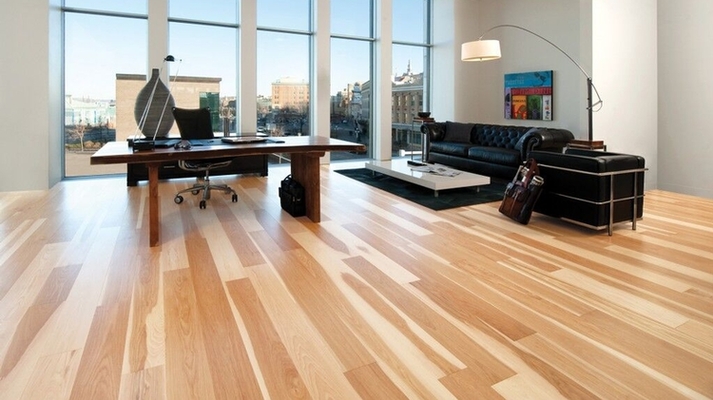
Floor sanding is a vital aspect of maintaining and enhancing the appearance of wooden floors, whether in residential or commercial spaces. The process involves removing the top layer of the wood floor using specialised equipment to reveal a fresh, smooth surface.
Achieving professional quality results through expert in floor sanding Melbourne offers a myriad of benefits, including improved aesthetics, enhanced durability, and an overall increase in the longevity of the flooring.
-
Understanding the Basics
Floor sanding is the process of meticulously sanding and refinishing wooden floors to restore their natural beauty and lustre. This technique not only revitalises the appearance of the floors but also helps to address imperfections and wear and tear that may have developed over time.
It is crucial to note that not all wood floors are suitable for sanding. Engineered wood floors have a thin layer of real wood on top and may not be viable candidates for sanding. On the other hand, solid hardwood floors offer the best results after sanding, revealing the natural grain and texture of the wood.
Before embarking on the sanding process, it is imperative to assess the condition of the floor. This involves inspecting for any signs of damage, such as deep scratches, gouges, or unevenness. Additionally, the thickness of the floorboards should be evaluated to determine if there is sufficient material to withstand the sanding process without compromising the integrity of the floor.

-
Essential Equipment and Materials
To achieve professional quality results, it is essential to utilise the right equipment and materials for floor sanding. The necessary tools include a drum sander, an edger, and abrasive materials such as sandpaper or sanding belts. The drum sander is used for the main sanding process, while the edger is employed for reaching areas that are inaccessible to the drum sander, such as corners and edges.
Selecting the right equipment is crucial, as different wood flooring types require specific tools for optimal results. For instance, softer wood species may necessitate the use of finer abrasives to prevent over-sanding and damage to the wood. Conversely, harder wood species may require more aggressive abrasives to effectively remove the top layer of the wood.
-
Preparing for Sanding
Prior to commencing the sanding process, thorough preparation is essential for a successful outcome. This includes clearing the room of all furniture and fixtures to create unobstructed access to the entire floor area. Additionally, adjacent surfaces such as walls and baseboards should be adequately protected to prevent damage from dust and debris generated during sanding.
Furthermore, it is imperative to inspect the floor from expert in floor sanding Melbourne for any damages or imperfections that may require repair before sanding. This may involve filling in gaps between floorboards, repairing loose or creaking boards, and addressing any protruding nails or staples that could interfere with the sanding equipment.
-
Sanding Techniques
Executing the sanding process with precision and expertise is crucial to achieving professional quality results. Best practices for operating sanders and edgers involve maintaining a consistent pace and applying even pressure to the surface. It is important to avoid lingering in one spot, as this can result in over-sanding and uneven surfaces.
A progressive grit sequence is recommended for effective sanding without causing damage to the wood. This involves starting with a coarser grit to remove the old finish and imperfections, followed by finer grits to achieve a smooth and polished surface. The final sanding stage should leave the floor with a uniformly fine texture, ready for refinishing.
-
Dust Control and Cleanup
Dust containment during the sanding process is paramount for a clean and professional finish. Implementing effective dust control measures, such as using dust bags with sanders and edger’s, helps to minimise airborne particles and maintain a healthier environment during the sanding process.
Additionally, sealing off the work area with plastic sheeting can prevent dust from spreading to other parts of the space.
Post-sanding clean-up is essential to remove residual dust and debris from the floor and surrounding areas. This may involve vacuuming the entire room, wiping down surfaces, and ensuring that no traces of dust remain before proceeding with the refinishing process.
Final Words
Mastering the art of floor sanding requires a comprehensive understanding of the process, the utilisation of essential equipment and materials, meticulous preparation, and the implementation of effective sanding techniques and dust control measures.
By following expert in floor sanding Melbourne techniques, individuals and businesses can achieve professional quality results, revitalising the appearance of wooden floors and enhancing their longevity.
Whether undertaking a DIY approach or enlisting the expertise of professionals, the goal remains the same to achieve impeccably sanded floors that exude timeless elegance and charm.
Source BY : floorpolishingmelbourne.wordpress.com


